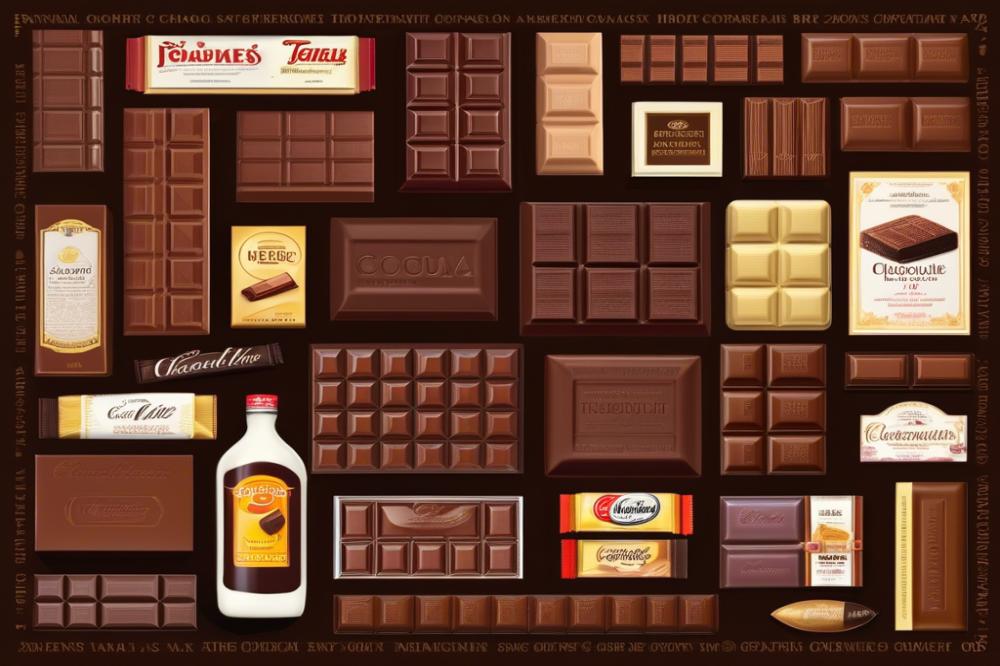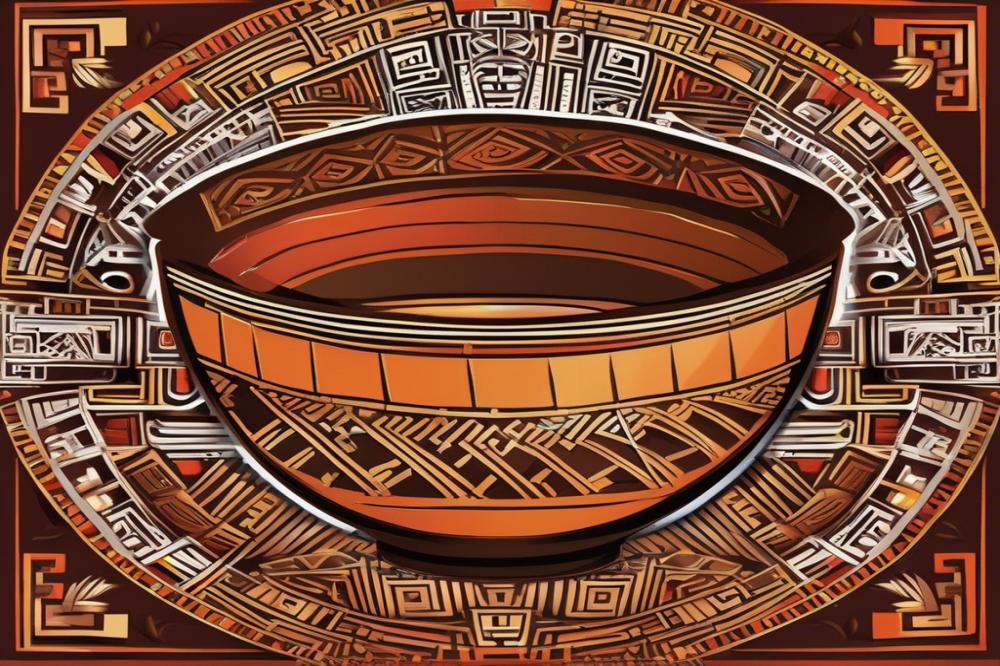Introduction
Chocolate has a fascinating history that stretches back thousands of years. From its early beginnings in ancient Mesoamerica, chocolate transformed from a ceremonial drink to a beloved treat. By the 20th century, its journey took a significant turn as various chocolate brands began to emerge and captivate the market.
The influence of advertising played a vital role in changing how people viewed chocolate. marketing strategies evolved rapidly, shaping consumer behavior and preferences. Brands launched promotional campaigns that reached audiences through the growing medium of mass media. As a result, chocolate became more than just a food; it became a symbol of enjoyment and luxury.
Advertising history reveals its impact on shaping the chocolate industry. Companies utilized product placement and innovative branding to embed chocolate deeply into popular culture. Consumers began to associate certain brands with specific lifestyles. The cultural impact of these strategies was profound, creating lasting habits and desires surrounding chocolate consumption.
In summary, this article will explore how advertising influence in the 20th century transformed chocolate consumption. We will uncover the various ways that marketing strategies shaped public perception, led to brand promotion, and ultimately changed our relationship with this delightful treat.
The Rise of Chocolate Brands in the 20th Century
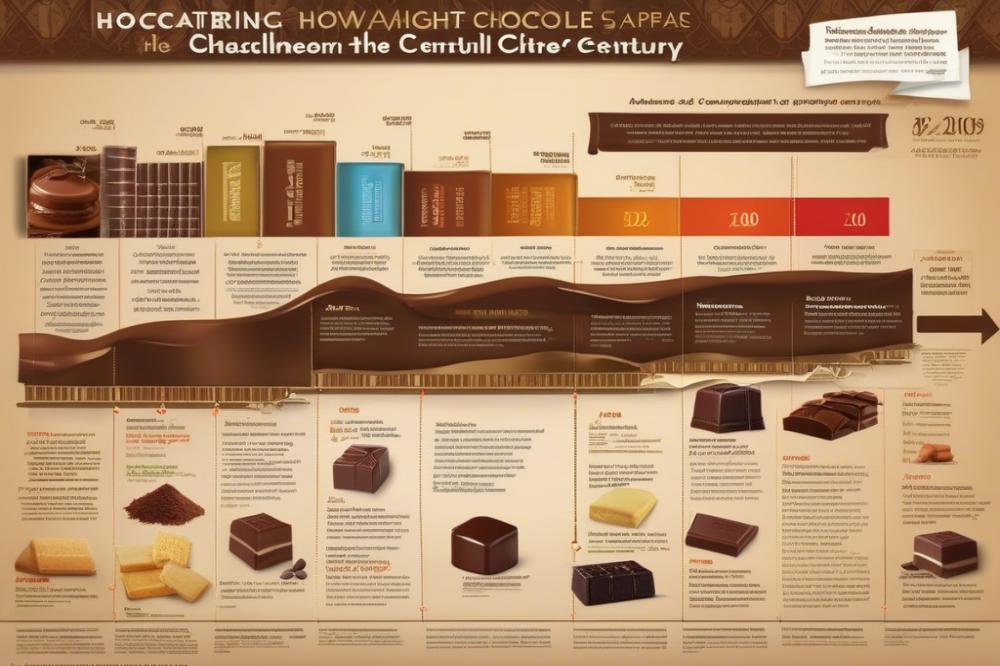
Emergence of Key Chocolate Brands
Chocolate brands started to gain popularity during the 20th century. This was a time of innovation and growth in the candy market. Companies like Hershey, Nestlé, and Cadbury emerged as leaders. Their strategies focused on creating memorable products that appealed to broad audiences. These brands offered exciting new flavors and textures. Many people began to recognize these names, which paved the way for brand loyalty.
Influence of Brand Identity on Chocolate Consumption
Brand identity became crucial as consumers sought connection. Each label had a story to tell, which made it more appealing. People were not just buying chocolate; they were buying an experience. Packaging also played a significant role. Bright colors and eye-catching designs attracted attention. As the 20th century progressed, these brands shaped consumer behavior. Shoppers began to associate quality and taste with specific names. This relationship increased demand for recognized products over generic items.
Evolution of Chocolate Products and Their Marketing Strategies
Marketing strategies for chocolate evolved alongside the products. Major brands didn’t just rely on taste; they expertly used mass media. Commercials highlighted exciting lifestyles and happy moments. Promotional campaigns often featured popular celebrities. This helped chocolate become a symbol of enjoyment and celebration. Product placement in movies and television also helped cement brands in the cultural landscape. With every advertisement, these companies reached deeper into people’s hearts and minds, influencing choices in ways that were previously unimaginable.
Marketing Strategies That Revolutionized Chocolate Consumption
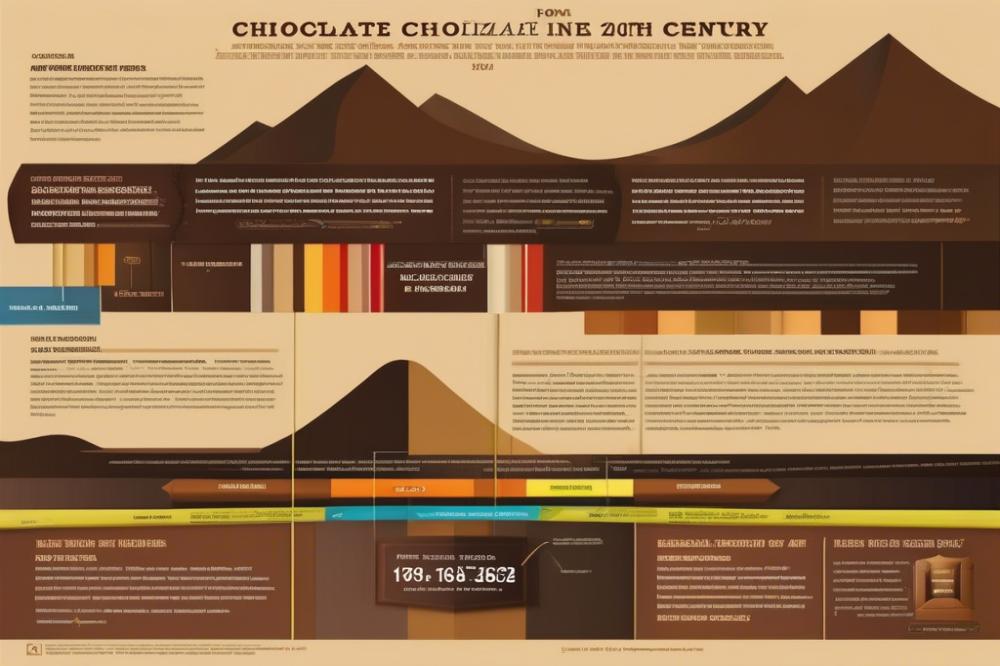
Throughout the 20th century, chocolate brands unleashed a wave of marketing strategies that changed how people viewed and enjoyed chocolate. These methods shaped consumer behavior and created lasting relationships between brands and buyers. The introduction of appealing advertising sparked interest in chocolate like never before.
Analysis of Various Marketing Techniques
Innovative techniques played a crucial role in brand promotion. Advertisements often highlighted the pleasure and indulgence of eating chocolate. Catchy slogans and charming imagery helped make chocolate a desirable treat. Through clever storytelling, brands presented chocolate not just as food, but as an experience. Emotional connections were built through these narratives, encouraging customers to select chocolate over other snacks.
Targeting Different Demographics and Consumer Behavior
Understanding target audiences became essential. Some advertisements aimed at teenagers highlighted fun and excitement. Others focused on adults, showcasing luxury and sophistication. By appealing to different demographics, brands attracted a wider variety of consumers. The research into consumer behavior allowed companies to position their products effectively. It was not just about selling chocolate; it was about creating a lifestyle associated with enjoyment.
Innovative Promotional Campaigns That Captured Public Interest
Promotional campaigns helped these chocolate brands stand out. Campaigns like contests and giveaways generated excitement and engagement. Product placement in movies and TV shows also played a significant role in getting chocolate noticed. Mass media quickly became a vital tool for reaching more people. Brands used clever ads to reach homes, capturing the imagination of the public.
As a result, the cultural impact of chocolate advertising was profound. Consumers began to see chocolate as a staple treat during holidays and celebrations. This perception shift allowed chocolate to secure its place in popular culture. Families began to include chocolate in their daily lives and traditions, turning it into an integral part of their routines.
The Role of Mass Media in Promoting Chocolate
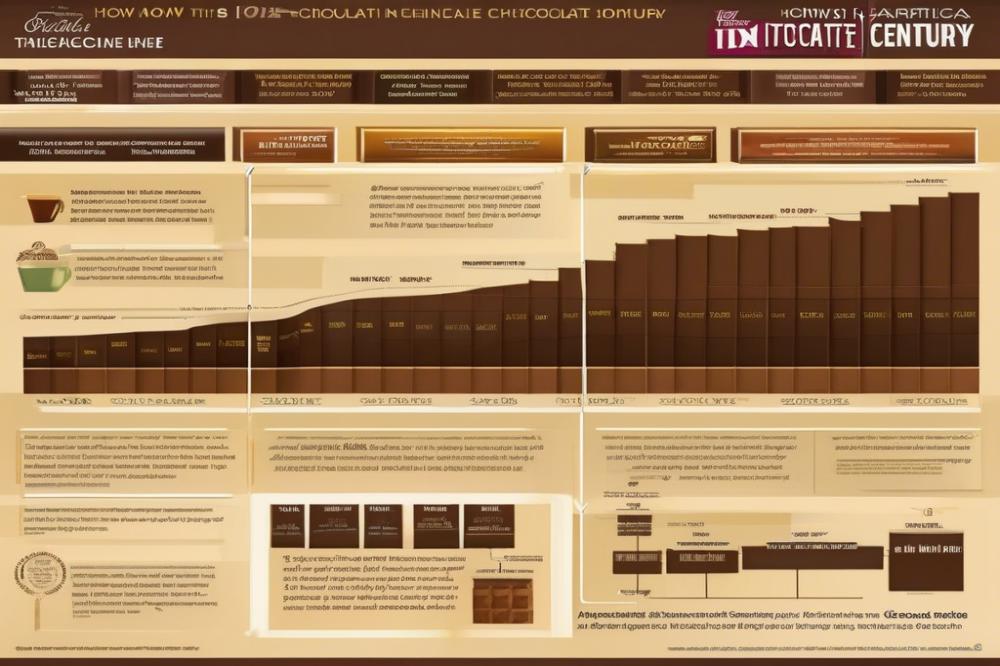
The influence of mass media on chocolate brands grew immensely during the 20th century. Television commercials, radio spots, and print advertisements became powerful tools for brand promotion. Many companies began to recognize that advertising was not just about showing a product; it was about weaving chocolate into the fabric of daily life.
With the rise of television, marketing strategies shifted dramatically. Families gathered around their screens, eager to watch shows while munching on snacks. This created a prime opportunity for chocolate manufacturers to introduce new products and flavors. Advertisements promoted the idea that chocolate could be part of special moments and celebrations.
Consumer behavior changed as mass media portrayed chocolate as an indulgence that everyone deserved. The messaging often centered on happiness, joy, and satisfaction associated with eating chocolate. Campaigns displayed happy families sharing chocolate bars or children enjoying candy at birthdays. This created a connection between chocolate and positive emotions.
Notable promotional campaigns shaped public perceptions significantly. Iconic slogans and catchy jingles helped to create brand loyalty. When people heard familiar tunes and phrases, they often thought of their favorite chocolate brands. The repeated exposure led to an increase in cravings and the desire to purchase these products.
Product placement in popular movies and shows also transformed chocolate marketing. Audiences saw characters enjoying candy bars, linking them to their favorite heroes. This clever strategy increased brand visibility and placed chocolate within cultural conversations. The use of celebrities in advertising further strengthened the connection between chocolate and enjoyment.
The advertising history of chocolate remained vibrant throughout the century. Print ads in magazines displayed mouthwatering images. These visuals appealed to consumers’ desires, making chocolate look irresistible. As the industry grew, brands invested in crafting memorable campaigns that would last through the decades.
In summary, mass media played a crucial role in shaping how people viewed and consumed chocolate. It created lasting impressions on consumer behavior. By tapping into the emotions tied to chocolate, advertisers crafted messages that resonated deeply. This allowed chocolate to become not just a treat but a cultural staple in many homes.
Cultural Impact of Advertisements on Chocolate Consumption

Throughout the 20th century, the world of chocolate transformed significantly. Marketing strategies played a crucial role in changing how chocolate was seen and enjoyed. Ads moved beyond simple product promotion. They told stories and shaped cultural narratives around chocolate. This connection influenced consumer behavior in ways that were profound and lasting.
Chocolate brands leveraged mass media to spread messages quickly and effectively. Promotional campaigns during this period included everything from peerless slogans to catchy jingles. People began to associate chocolate with happy moments, celebrations, and indulgence. This shift drastically changed society’s views on enjoying sweets and treats.
Advertisements presented chocolate as a staple of modern life. Many ads showed families sharing a bar or friends enjoying chocolates at parties. Such imagery created a sense of community. It also encouraged consumers to view chocolate as a necessary part of social gatherings or personal treat times. Ironically, these marketing messages entwined chocolate with happiness, love, and care.
Product placement became an effective tactic in the marketing world. Movies and TV shows featured characters enjoying chocolate brands, linking these products to fun and excitement. As these visuals gained popularity, they cemented chocolate’s status as a beloved choice. This connection grew stronger over time, further solidifying its place in everyday life.
In some cases, advertising highlighted health benefits. Brands promoted chocolate as a morale-boosting snack, sparking curiosity and desire. These claims reshaped consumer attitudes about its role in a balanced diet. As people began to indulge guilt-free, consumption increased dramatically.
Looking at advertising history reveals a fascinating journey. Each era introduced new ideas and styles, evolving how chocolate was perceived. The competitive landscape pushed brands to innovate. This led to unique advertising campaigns that resonated with different generations.
Ultimately, the relationship between advertising and lifestyle changes is evident. Chocolate became not just a treat, but a symbol of enjoyment and self-care. The narratives crafted through advertising made chocolate an integral part of popular culture. Today, we can trace the evolution of chocolate consumption back to the powerful influence of advertisements.
Product Placement and Its Impact on Consumer Choices
Product placement refers to the practice of featuring products within various forms of media, such as movies, television shows, and video games. This marketing technique is significant because it connects brands with audiences in ways that traditional advertising may not. By integrating products into the storyline or scenes, companies can create a more natural and appealing presence for their offerings.
Case Studies of Successful Product Placements Involving Chocolate
Throughout the 20th century, several successful cases highlighted how chocolate brands used product placement to their advantage. For example, in the classic film “Willy Wonka & the Chocolate Factory,” viewers were captivated by the imaginative portrayal of chocolate treats. This film not only entertained but also promoted well-known chocolate brands, making them memorable to audiences.
Another notable instance is the iconic “E.T. the Extra-Terrestrial.” Reese’s Pieces became a household name after the candy was featured prominently in the movie. This clever marketing strategy led to a significant boost in sales, showcasing how product placement can directly influence consumer choices.
Effects on Consumer Behavior and Brand Loyalty
Product placement impacts consumer behavior significantly. Audiences often associate featured products with the characters they admire. This emotional connection can lead to increased brand loyalty. When viewers see their favorite stars enjoying chocolate, they are more likely to desire that sweet treat.
Promotional campaigns utilizing this method often generate buzz and excitement. As consumers engage with these products in their favorite shows, their preferences may shift. In a crowded marketplace, having a memorable placement can set a brand apart from competitors.
The cultural impact of this marketing strategy cannot be overlooked. Chocolate brands have intertwined themselves with popular media, which shows how effective advertising history has been in shaping consumer perceptions. In conclusion, the integration of chocolate into films and TV has become a powerful tool in driving consumption and loyalty among fans.
Final Thoughts on Advertising and Chocolate
Recap of Key Points
Advertising played a crucial role in transforming the chocolate industry throughout the 20th century. Various brands utilized clever marketing strategies to promote their products. They created memorable slogans, engaging commercials, and eye-catching packaging that drew consumers in. It was not just about selling chocolate; it was about creating a lifestyle. Brand loyalty grew as people began to associate certain chocolates with specific feelings and moments.
Long-term Effects
Looking back, we can see that the impact of advertising went beyond just increasing sales. Chocolate became a symbol of enjoyment and indulgence. The perception of chocolate shifted from a simple treat to a necessary part of celebrations and everyday life. This shift affected people’s habits and choices. Consumers became emotionally connected to brands and started to expect more from their chocolate experiences.
Future Implications for Brands
Today, chocolate companies must navigate a more complex market. The way consumers view advertising has changed significantly since the 20th century. Authenticity and transparency are now more valued than ever. Brands that wish to succeed need to focus on building trust with their customers. Engaging storytelling and responsible sourcing can help foster a positive image. Understanding the lessons from the past will aid these brands in crafting effective messages. They must adapt and innovate to stay relevant in a competitive environment.
In conclusion, the chocolate landscape has been shaped dramatically by advertising over the years. As we move forward, a thoughtful approach to marketing could yield great rewards.

